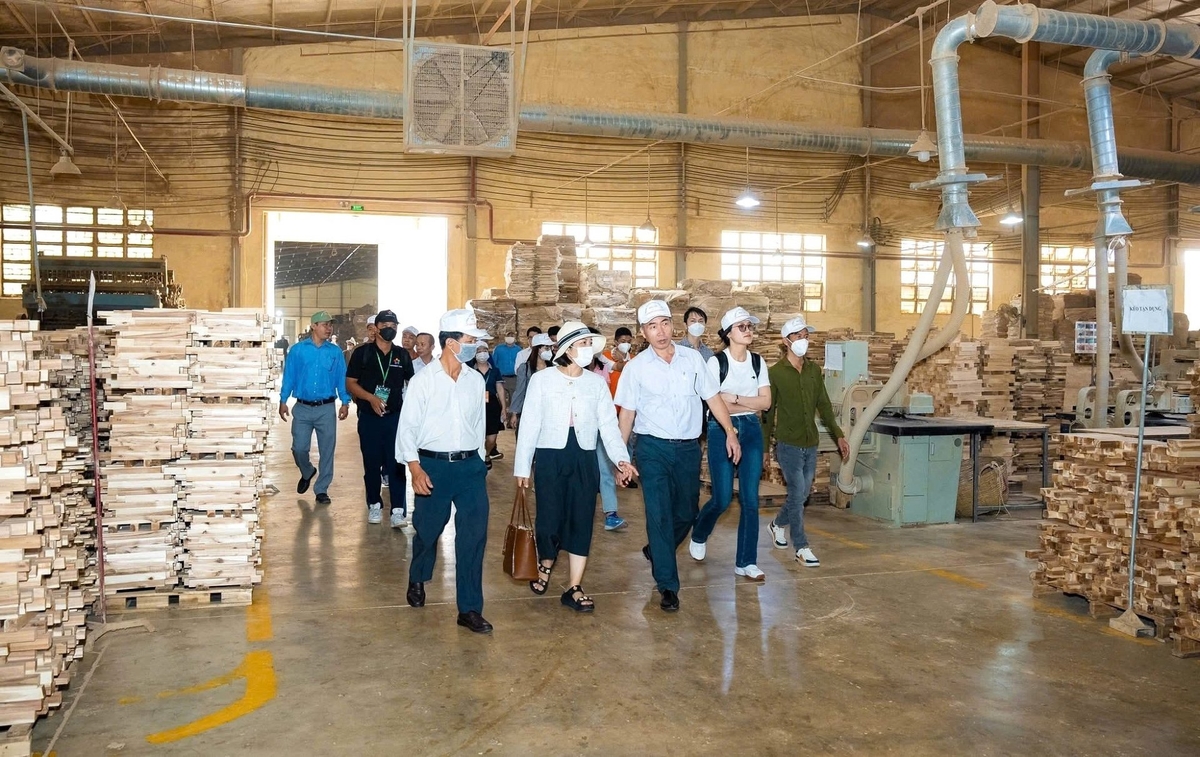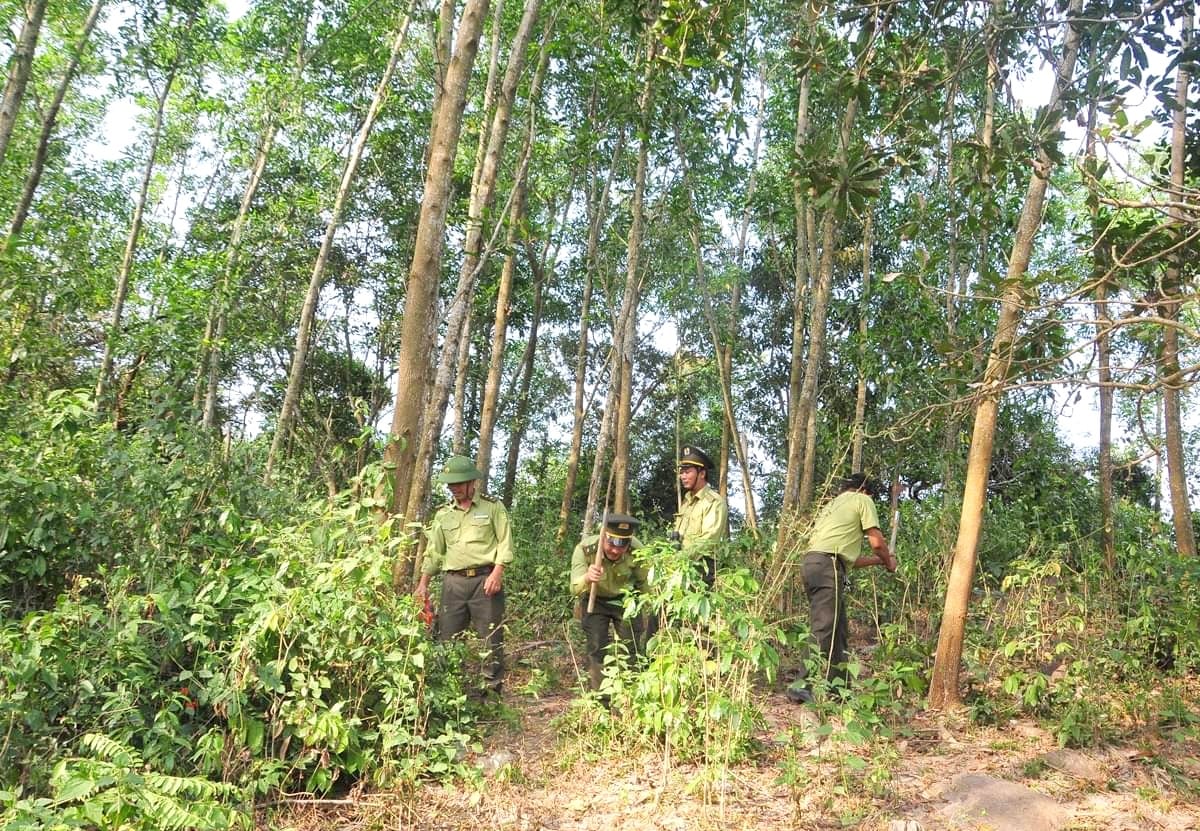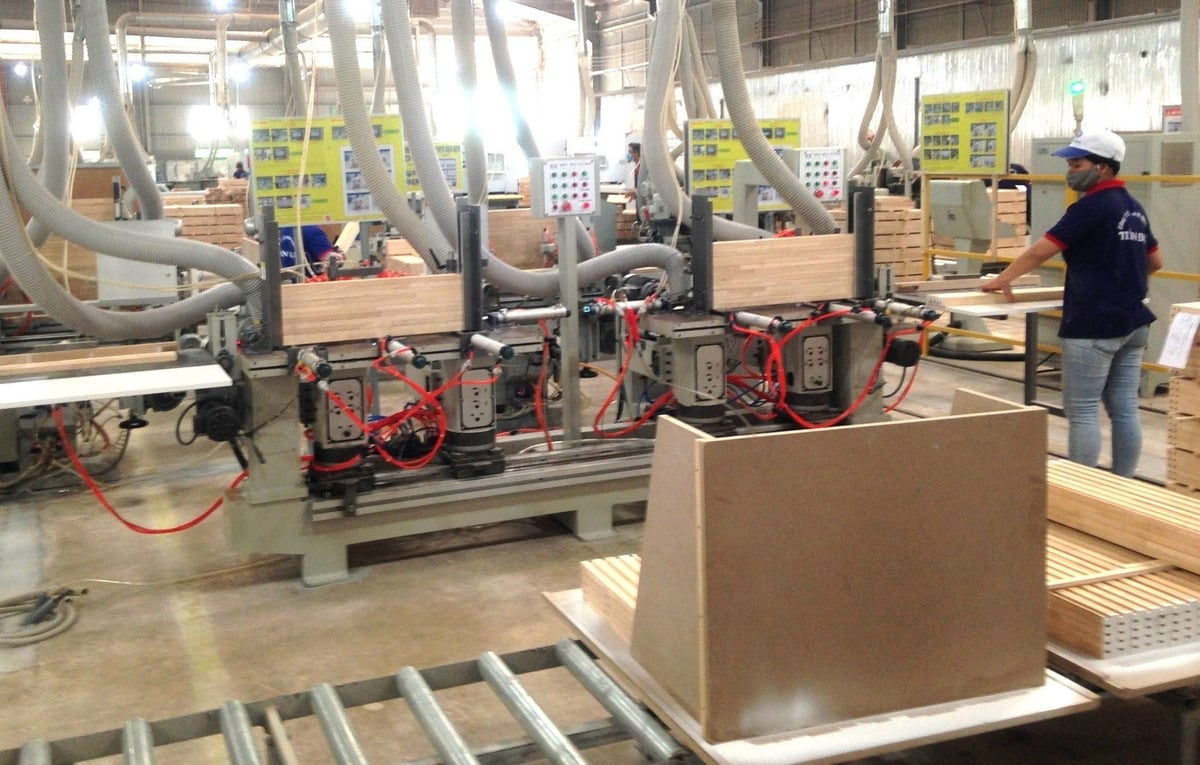December 5, 2025 | 22:55 GMT +7
December 5, 2025 | 22:55 GMT +7
Hotline: 0913.378.918
December 5, 2025 | 22:55 GMT +7
Hotline: 0913.378.918
According to Mr. Nguyen Tuan Hung from the Department of Forestry and Forest Protection, green transformation is not merely a trend but a mandatory requirement for Vietnam’s wood industry to alleviate the pressure of complying with EUDR. The Vietnamese wood processing sector needs to promote large-scale certified afforestation, limit the exploitation of natural forests, and adopt international environmental standards to meet market demands.
Meanwhile, Mr. To Xuan Phuc, an expert from Forest Trends, warned: “If businesses do not quickly transition toward sustainability, the risk of losing market access will be significant. Importing countries are imposing strict technical barriers, particularly regarding the traceability of legally sourced timber and environmental certification.”

Vietnamese wood enterprises are lagging behind other countries in automation. Photo: V.D.T.
Mr. Pham Ngoc Tuan Anh, Director of Forestry and Wood Certification Services of SGS Vietnam, proposed a number of solutions to help the Vietnamese wood industry adapt to the green transition process. Accordingly, it is necessary to develop sustainable raw material areas, including encouraging the planting of large FSC-certified timber forests, reducing dependence on imported raw materials. Applying clean production technology by using renewable energy, improving production lines to save raw materials and reduce emissions. Taking advantage of support policies is proactively approaching support programs of the Government and international organizations on green transition. Reducing dependence on exports by exploiting the potential of the domestic market with environmentally friendly products.
Ms. Nguyen Thi Thu Hoai, Chief of Office of Dong Nai Wood and Handicraft Industry Association shared: “Visiting Binh Dinh, we saw that most of the wood industry enterprises here not only innovate technology but also have effective production strategies, helping other enterprises in the industry learn from experience in modern production models, meeting the need for green transformation”.
Faced with the disruption of the supply chain due to geopolitical conflicts in the world; in addition, the wood industry also has to face technical barriers and tax policies of major export markets such as the United States and Europe, many opinions say that the Vietnamese wood industry must strengthen the chain of links between processing enterprises, forest growers and raw material suppliers for sustainable development. Especially now that domestic raw wood only meets about 30-35% of production needs.
Mr. Nguyen Minh Hoang, Director of Binh Dinh Forestry Company BFC, said: “We import wood from Russia and the United States for processing, but if we can take the initiative in domestic raw materials, the wood industry will have more advantages”.

Mr. Pham Anh Tuan, Chairman of the Binh Dinh Provincial People’s Committee, believes that developing large timber forests is a necessity. Photo: V.D.T.
In the first quarter of 2025, the country's wood exports reached USD 3.8 billion, up 7% over the same period last year. However, businesses still face difficulties due to a 10-15% increase in raw material prices. In addition to the issue of proactively sourcing raw wood, Mr. Le Van Luong, General Director of Dai Thanh Wood Technology Joint Stock Company (Quy Nhon City, Binh Dinh), emphasized the importance of digital transformation and technology investment.
"Although many businesses have invested on a large scale, the connection in the supply chain is still not tight. Without building a synchronous supply chain, the wood industry will hardly be able to develop strongly and sustainably. Businesses need to cooperate more closely to share experiences and link in the supply chain to increase competitiveness," Mr. Luong shared.
Mr. Le Xuan Quan, Chairman of the Dong Nai Wood and Handicraft Association, is also very concerned about the "gaps" in the supply chain of the Vietnamese wood industry. “A question that always haunts me is why the Vietnamese wood industry has not yet formed a strong enough supply chain to serve the industry’s operations. Is it because the connection between wood industry enterprises is still weak, the broken supply chain has caused many enterprises to face many difficulties in production activities?” Mr. Quan wondered.

The demand for green transformation in the timber industry is becoming increasingly urgent. Photo: V.D.T.
Mr. Pham Anh Tuan, Chairman of the Binh Dinh Provincial People's Committee, noted that global policies related to the development of the timber industry are undergoing significant changes. Timber enterprises must prioritize product quality, followed by market considerations, green production, and the application of science and technology, especially automation in manufacturing.
At the same time, Mr. Tuan pointed out that the supply chain in the timber industry is currently facing challenges. Given the difficult circumstances, the industry needs a supply chain in which each stage is well-supported. Strong enterprises must take the initiative in establishing a comprehensive supply chain to reduce costs and ensure competitive pricing.
"Large timber plantation is a necessity. Therefore, the Vietnam Timber and Forest Products Association needs to collaborate with local associations and businesses to advise the Ministry of Agriculture and Environment on developing support policies for large timber plantations," shared Mr. Pham Anh Tuan.
Translated by Kieu Chi

(VAN) After three years, Project FST/2020/123 collected approximately 3,000 insect specimens, classified them into about 50 morphological groups, and identified around 40 species, including several new species.
/2025/12/01/0509-2-175427_206.jpg)
(VAN) Emission-reducing coffee areas in Lam Dong have entered the new crop with stable yields, improved quality, and a remarkably enhanced cultivation environment.

(VAN) The Institute of Agricultural Sciences for Southern Vietnam (IAS) marked its 100th anniversary in Ho Chi Minh City, celebrating a century of growth as a leading institute contributing significantly to Viet Nam’s agricultural development.

(VAN) An increasing number of livestock farms are using biogas generators to create a source of renewable electricity, helping to save costs and mitigate environmental pollution.

(VAN) Small changes in rice cultivation, from irrigation methods and straw collection to input management, are paving a new way for Vietnam's agriculture in the journey toward emission reduction.

(VAN) With the project of converting biogas into renewable electricity, Australia is both helping pig farms reduce their energy costs by up to 25% and contributing to environmental protection.
![Hue aims for Net Zero: [1] Initial steps from green transportation](https://t.ex-cdn.com/nongnghiepmoitruong.vn/608w/files/huytd/2025/11/28/0853-anh-6-giao-thong-xanh-hue-094717_940-153724.jpg)
(VAN) For sustainable development, Hue City is implementing many solutions to promote green transportation, which is an important initial step on the journey to building a Net Zero Hue.